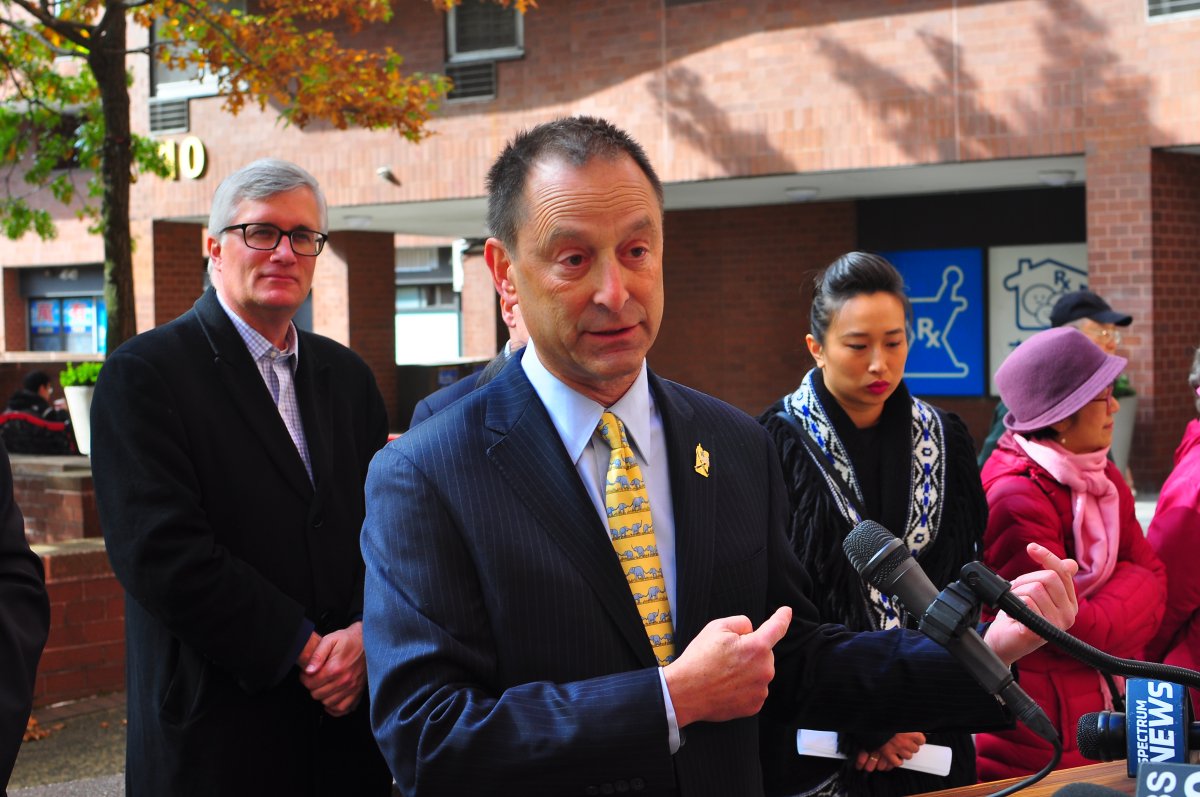
Photo by Colin Mixson
BY COLIN MIXSON
Roughly 250,000 people who breathed poisoned air while living, working, and studying Downtown after 9/11 don’t realize they may be eligible for compensation and healthcare from Uncle Sam, with many of them still believing benefits related to the attack are reserved for emergency responders and cleanup workers only, according to an attorney specializing in 9/11 related health issues.
“That law passed by congress is not just for the first responders — that’s what a lot of people think — but it affects everybody who was exposed to the toxic dust,” said Michael Barasch, who represented Det. James Zadroga, who’s disease, death, and subsequent autopsy inspired the 2010 Zadroga 9/11 Health and Compensation Act.
In the immediate aftermath of the terrorist attack, the Environmental Protection Agency not only failed to warn firefighters and cops about the pulverized glass, lead, chromium, and other carcinogens that lingered in the atmosphere Downtown — it also sounded the all clear for some 25,000 residents, 300,000 workers, and thousands of students and teachers to return to an area now known to have been fatally toxic, according to Barasch.
The federal government has since determined that poisonous chemicals saturated the air until May, 2002, and to make amends, Congress enacted the two-part Zadroga Act, which has registered 80,000 people for free health care under the World Trade Center Health Program and paid out $3 billion from September 11 Victim Compensation Fund to 14,000 victims, according to the attorney.
But that leaves hundreds of thousands more “forgotten victims” — people who lived, worked and went to school south of Canal Street who still haven’t applied for benefits through the federal program. And many of those people now developing cancer are not only failing to realize a link between their health problems and the attack, but they’re unaware that they’re eligible for free medical coverage and other compensation from the government, Barasch said.
“Why would I make the connection that my cancer could be caused by exposure 10 years earlier when the government told me it was safe?” Barasch said. “We are getting calls every day from people living and working Downtown that they have cancer and they’re just learning about their rights under the Zadroga Health and Compensation Act,” he said.
To get the word out, Barasch spoke at a press conference in Chinatown on Nov. 9, along with elected officials and representatives from the United Federation of Teachers, where a team of advocates led by union member Elle Angler noticed a trend of Downtown teachers falling ill.
“We started seeing anecdotal evidence of members coming to us with specific types of cancer,” said UFT president Michael Mulgrew. “She noticed there’s a trend, especially from people who worked in the 12 schools below Canal Street after 9/11.”
Retired math teacher Catherine Heron, for example, was teaching at the High School of Economics and Finance at 100 Trinity Pl. on 9/11. While she was evacuating her students, they were caught in a cloud of toxic dust when the second tower fell, and developed lung cancer in 2007. But she never thought to register for the Victim Compensation fund until this year when the union reached out to retired educators teachers with help to enroll.
“I was always, well, overwhelmed with the idea of the paperwork, and it just brought everything back. But with help, it made sense to take the step and do it,” Heron said.
And it’s not just teachers succumbing to cancers and pulmonary illnesses as a result of their exposure to Downtown’s toxic air, but former students now in their twenties are sick with lung ailments and one of 68 cancers linked to the attack, according to Barasch.
“We now represent a dozen kids with cancer,” said Barasch. “A 28-year-old girl should not have breast cancer. A 29-year-old boy should not have bladder cancer. The only thing they did wrong was listen to the EPA.”
The World Trade Center Health Program and the Victim Compensation Fund have different eligibility requirements. For example, the coverage map for the Victim Compensation Fund just covers Downtown from The Battery to Canal Street, while the map for the World Trade Center Health Program extends up to Houston Street and even into Brooklyn Heights.
Anyone looking for more information about enrollment in 9/11 health and compensation programs should attend a forum at PS 124 at 40 Division St. in Chinatown on Nov. 18 from 3 pm to 5 pm, which will feature a two-hour forum on eligibility and benefits available through the federal programs.

















